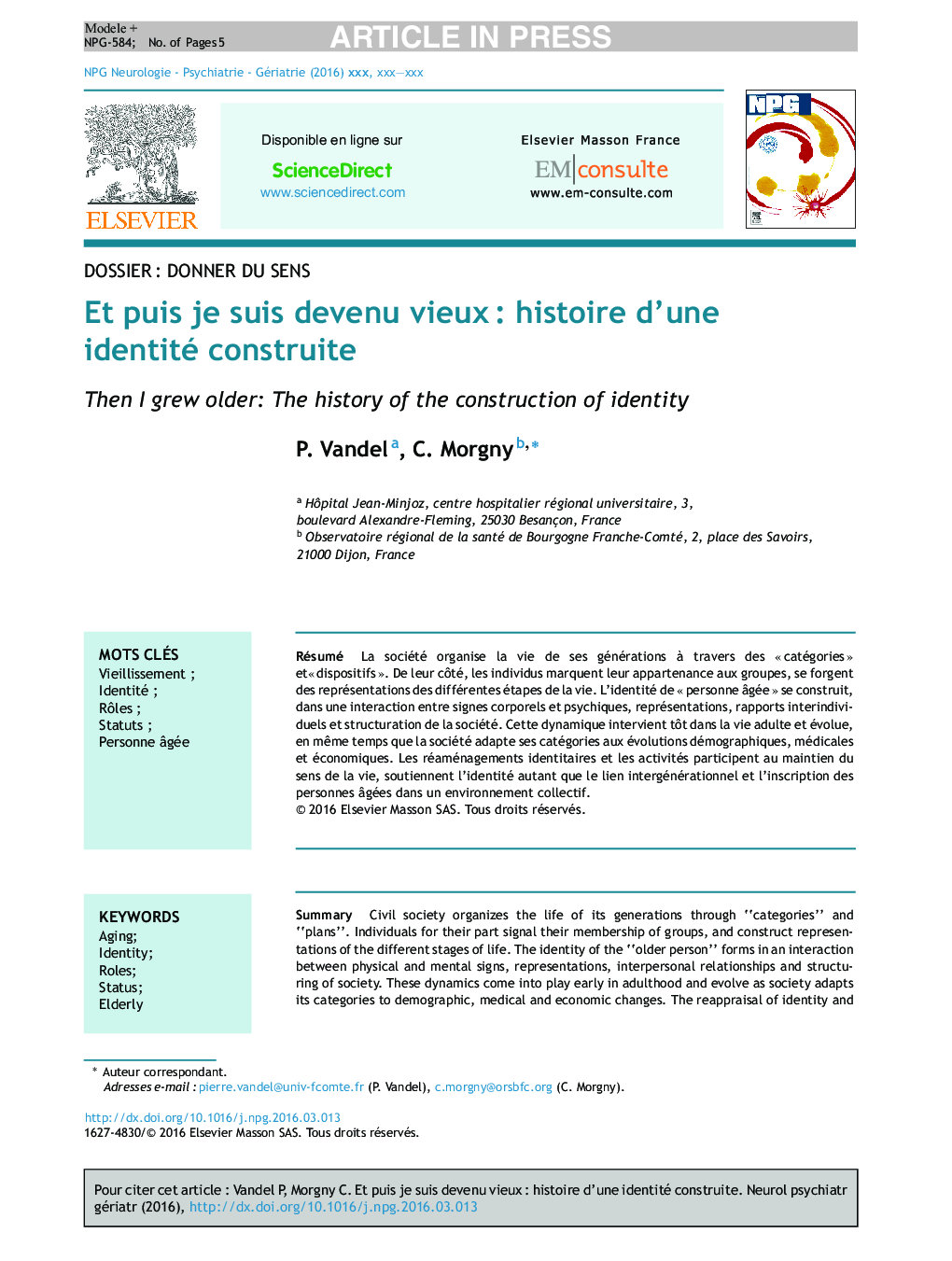| Article ID | Journal | Published Year | Pages | File Type |
|---|---|---|---|---|
| 3325984 | NPG Neurologie - Psychiatrie - Gériatrie | 2016 | 5 Pages |
Abstract
Civil society organizes the life of its generations through “categories” and “plans”. Individuals for their part signal their membership of groups, and construct representations of the different stages of life. The identity of the “older person” forms in an interaction between physical and mental signs, representations, interpersonal relationships and structuring of society. These dynamics come into play early in adulthood and evolve as society adapts its categories to demographic, medical and economic changes. The reappraisal of identity and the different activities contribute to preserving the meaning of life and support identity, in the same way as intergenerational links and the implication of older people in a collective environment.
Related Topics
Health Sciences
Medicine and Dentistry
Geriatrics and Gerontology
Authors
P. Vandel, C. Morgny,
